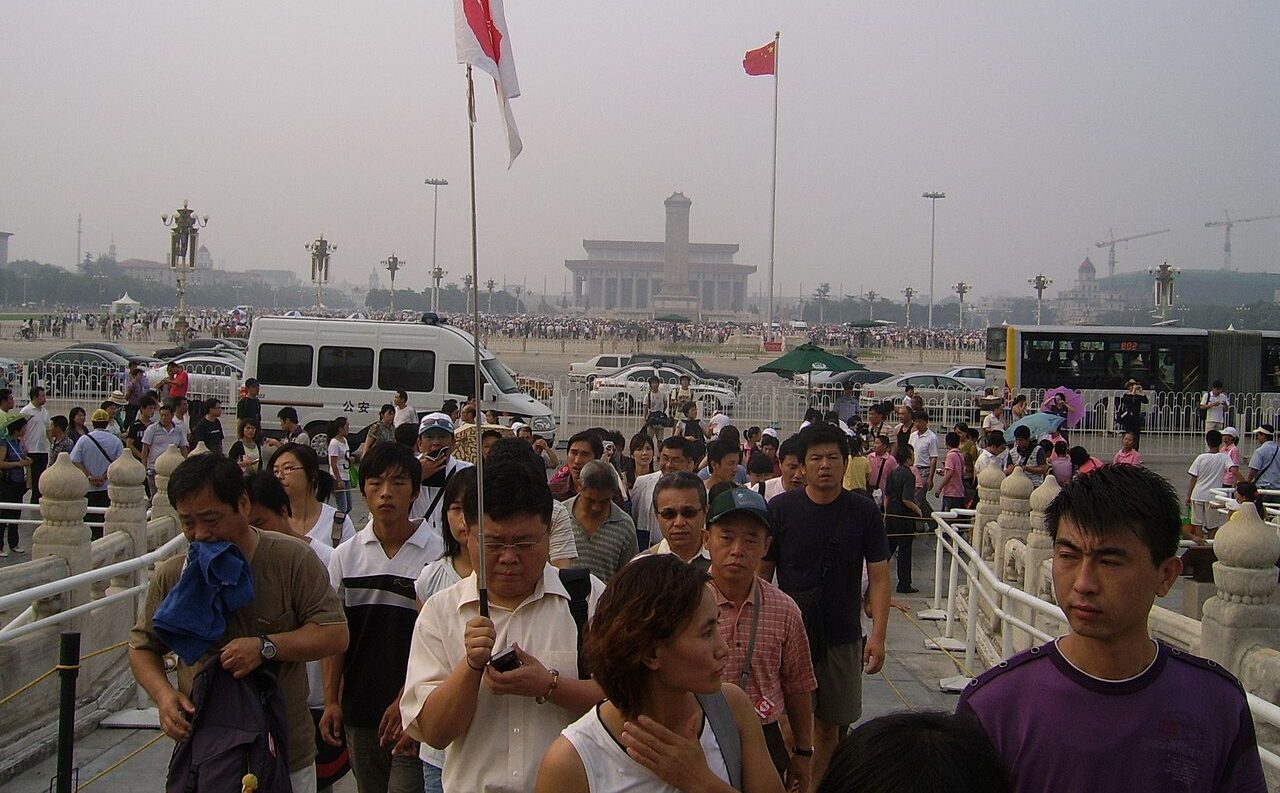Is China no longer the locomotive of the world economy?

Last year, China's GDP, the world's second largest economy, grew by just 3%, its lowest since 1976. Here's why. Le Monde article
The elites of Davos and the Chinese government dream of this: to forget 2022, its borders, its ships that remain docked, its factories that are, at best, idle, its shopping malls closed and its airports deserted, for recover better and make China a major driver of global growth again in 2023.
Statistics released on Tuesday 17 January show that the road ahead will be complex. In 2022, China's gross domestic product (GDP) grew by just 3%. The worst figure since 1976, with the exception of 2020 (2.24%), marked by the country's paralysis in the first quarter. Above all, it is far from the target announced in March 2022, which was "around 5.5%". After growth – over one year – of 4.8% in the first quarter, 0.4% in the second and 3.9% in the third, China closed with an increase in activity – again over one year – of 2.9% in the fourth quarter.
In 2022, Chinese growth has thus been keeping pace with the global economy. For the first time in decades, it did not fulfill its role as a locomotive. Conversely, other emerging countries fared much better. In fact, it was the rest of the world that led China, with exports up 10.5%, while imports increased by just 4.3%. As a result, foreign trade recorded a record surplus of 5.863 billion yuan, or more than 800 billion euros (compared to 597 billion euros in 2021). Whatever people say, the decoupling of economies is far from obvious.
Urban unemployment on the rise
On the other hand, the Chinese consumer has remained frugal, confined to the house due to the zero Covid policy. Retail sales of consumer goods even decreased by 0.2% year-on-year. Total investments increased by 5%, mainly thanks to (public) investments in infrastructure (+9.4%) and in the manufacturing sector (+9.1%). As expected, the real estate sector plummeted (-10%), with retail space sales plummeting by 24%.
Another logical consequence of this low consumption is that urban unemployment went from 5.1% in December 2021 to 5.5% in December 2022 (for young people aged between 16 and 24 it went from 14, 3% to 16.7%). Inflation remained under control, with a 2% increase in consumer prices.
In 2022, the cost of spending on the zero Covid strategy has been phenomenal. The province of Guangdong alone (126 million inhabitants, i.e. just under a tenth of the Chinese population) estimates its spending at 146.8 billion yuan in three years: 30.3 billion yuan in 2020, 45.4 billion in 2021 and 71.1 billion in 2022. This exponential increase speaks volumes about the infernal machine that the Covid zero policy for public spending had become, and largely explains its abandonment on December 7, 2022. Above all because these expenses, which consist mainly of tests and policing measures to isolate neighborhoods and even cities, they cannot be seriously considered investments.
Recovery in the second quarter
While Q4 2022 growth wasn't as bad as many expected, experts don't expect a real recovery until the second quarter. Both due to the Covid-19 epidemic, which may not have reached its peak yet, and due to the global economic slowdown, the first quarter should not be very positive.
“The upward trend starts in the second quarter,” say US experts at the China Beige Book. Between an already vastly over-indebted state, a monetary policy with little room for maneuver and consumers who will not turn from ants to cicadas overnight, the Natixis bank experts are not having many illusions.
“Overall, China should be able to grow by around 5.5% in 2023 (…). A far cry from 8% in 2008 or 8.1% in 2021, after the first wave of Covid. In other words, China's support to the global economy will be more limited than might have been thought, due to the rapid opening of its economy after a strict zero Covid policy,” writes Alicia Garcia-Herrero, Asia expert for the bank. French. South China's two big provinces, Guangdong and Zhejiang, set a growth target of "above 5%" without further details.
Important measures to support the economy
A less ambitious target than the 5.5% set by Shanghai or the 7% by Jiangxi. The government's goals won't be known until March, when the annual session of China's parliament is held. It is expected to be “about 5%”. But 2022 has shown that even in this country, where in principle everything is planned, growth cannot be decreed. In fact, the World Bank expects a growth rate of just 4.3% this year, low compared to previous decades, but higher than the rest of the world.
Even if it has lost its strength, China should once again play its role as a locomotive. All the more so as President Xi Jinping will undoubtedly do everything to revive growth, in particular to silence criticism related to the unexpected abandonment of the Covid zero policy and the current wave of deaths.
Beijing has already announced important measures to support the economy, has relaxed regulations to favor the real estate sector and has announced that it has completed the overhaul of the high-tech sector. In any case, the country remains unavoidable. With a GDP of 121.020 billion yuan, China is consolidating its position as the world's second largest economy, behind the United States and well ahead of Japan. Guangdong alone has a GDP equivalent to Canada, a G7 member.
(Excerpt from the press release of eprcommunication)
This is a machine translation from Italian language of a post published on Start Magazine at the URL https://www.startmag.it/mondo/cina-crisi-economica-2022/ on Sun, 22 Jan 2023 06:56:46 +0000.
